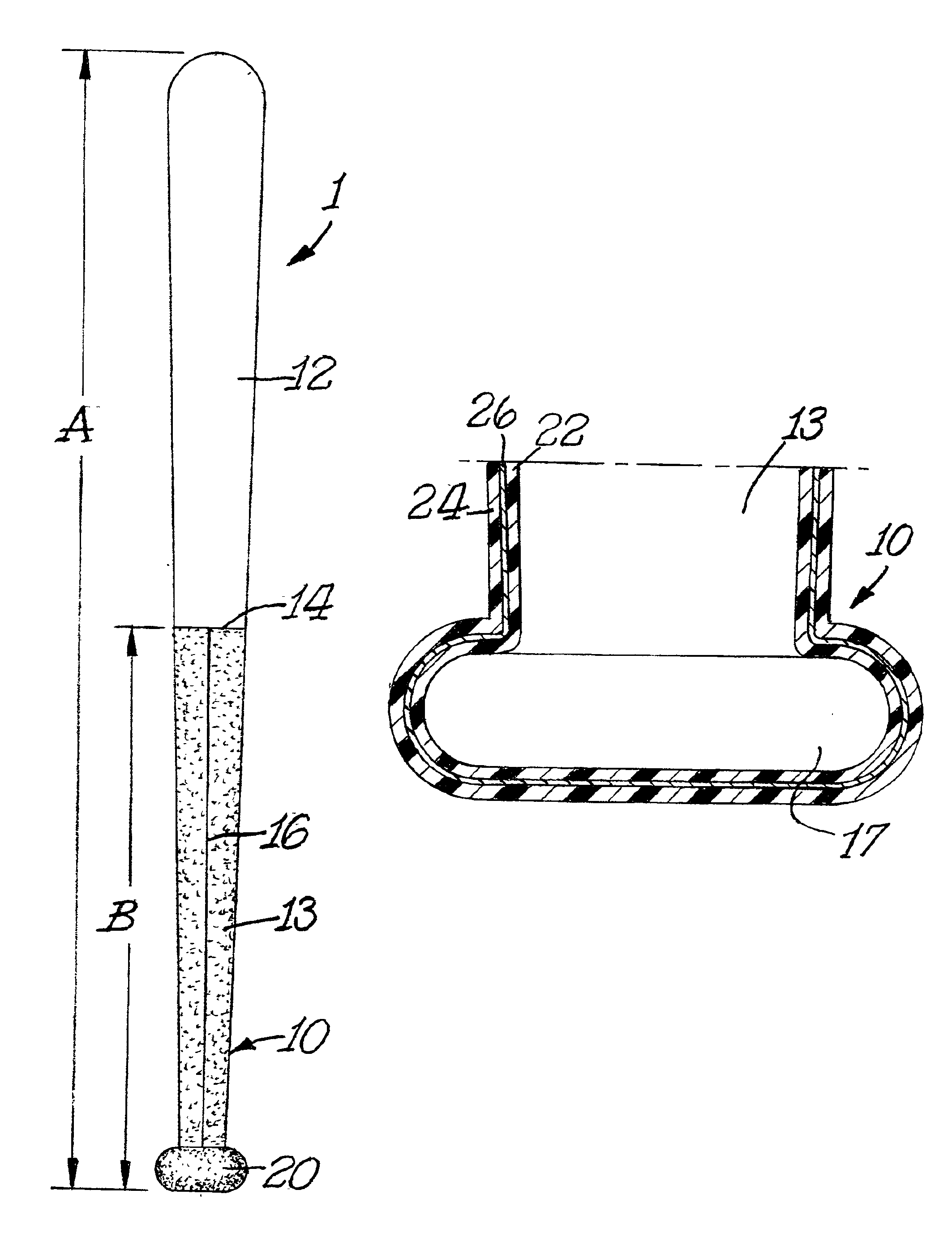If the bat is struck at its antinode, the bat will sting or even break.
Also, the more the bat oscillates, the more energy the bat absorbs, so striking the bat at its antinodes wastes energy.
When the ball strikes a bat, not all of the
kinetic energy is restored back to the ball; a significant amount of energy is lost into the bat.
Collisions occurring elsewhere will cause the bat to rotate about its
center of mass.
The bat not only recoils and rotates but it also vibrates resulting in the bat stinging or even breaking.
The bat will not be able to transfer any additional energy to the ball past that point, so the batter is only
wasting precious energy trying to “
muscle the ball” any further.
Wooden bats are expensive and break easily, while aluminum bats are virtually indestructible.
Despite all of this, one of the aluminum bat's major disadvantages is that it will transmit vibrations very efficiently, causing a greater stinging
sensation in the hands.
Aluminum bats are illegal to use in any professional game.
This type of interference is known as destructive interference.
This results in faster and further travel of the ball.
However, because baseball players are not superhuman, as the weight of the bat increases, the ability to generate bat speed decreases, which in turn lessons the
momentum produced.
With a heavier bat, the velocity slows down and the ball, is not able, to be hit as far.
It appears that there is a “push-pull” action between the hands, generating a large amount of torque.
If the batter does not initiate the swinging with torque and rotational forces, he will not be able to obtain the position of power required to apply
maximum torque to the bat before contact.
The medical consequences of long-term and multiple short-term exposures of the body to
vibrational energy have only recently come to light, and are, only now, being taken seriously as a danger to one's health.
Any sport that entails repetitive flexion—extension of the
elbow or pronation-supination of the
wrist can lead to overuse injuries.
Vibratory energy that is transmitted from instruments, such as baseball bats, tennis racquets and golf clubs, add to, or can be the sole cause of these lower arm problems.
These tendons are poorly supplied with a
blood flow and have few blood vessels.
Constant use or trauma causes microscopic
tears in the fibers of these tendons.
This area is very small and can become very crowded when the tendons are inflamed from too much work or when
calcium deposits accumulate on the nearby bony areas.
Since the
blood supply is poor, the healing process is much slower than normal.
Then out of enthusiasm, the activity is again performed and more damage (
irritation) occurs.
This is more serious because the
tendon becomes inflamed and thickens in the small space.
The
tendon begins to rub more consistently and pain sets in.
Besides pain there is a decrease in the ability to move the shoulder and a marked
weakness.
The psychological aspects of pain and the anticipation of pain can have a devastating effect on the athlete's performance.
If an athlete has experienced the discomfort of pain in the past, such as an injury from playing or over use pain; or even the simply stinging pain received when a baseball strikes a bat or the pain of catching a line drive ball int eh palm portion of his glove; the memory of this incident may cause the athlete to hesitate, flinch or even try to avoid the situation.
This can have devastating effect on the ability of this player to perform effectively.
Distraction is damaging to your performance because it interferes with your ability to focus and disturbs flow.
It interferes with the attention that you need to maintain good technique.
This causes stresses and consumes mental energy that is better applied elsewhere.
High
anxiety is typically the major cause of
choking and it leads directly to a decrease in performance.
If
anxiety increases beyond the optimal level necessary for the given task, a declining in performance will follow.
In addition, self—doubts regarding one's performance and a desire to impress others will create a high level of
anxiety.
Usually
athletes will
choke in situations when they try to impress others and / or have self doubts related to their performance.
Choking starts out as a cognitive problem and ends up the physical one, and thus negatively affects performance.
This causes feelings of tension and anxiety, both of which distract you from the task at hand and therefore impede performance.
The athlete is so worried, unfocused and physically tense that there is no way he can let his natural instincts takeover and be fluid in his movements.
He tends to grip things tighter and fatigue prematurely because he is
breathing in short, rapid and shallow.
Unfortunately, in sports this is a negative.
 Login to View More
Login to View More  Login to View More
Login to View More 


